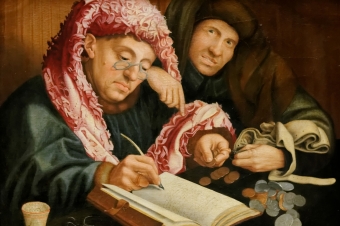Summary:
The role-playing workshop of Tax Law is an activity that allows students to put into practice the key concepts learned in the course. It is a dynamics in which, assuming the Fisco taxpayer or position, the students should be able to articulate legal arguments and defend their position in a particular case, based on judgments.
Objective:
- GENERAL GOAL: The goal of the class is to put the student in contact with the judicial and administrative decisions on tax matters that address issues seen in plenary classes. It is an activity that helps to consolidate the content taught, once it enables the student to handle legislation, doctrine and jurisprudence, taking a position (Fisco or IRS Taxpayer) in the debate.
- SPECIFIC GOAL: The general problem addressed regards to the disputed tax matters. It is intended that the student understands the case and be able to separate the main arguments. The aim is to teach students to handle the tax legislation and find answers to real situations.
- DEVELOPED ABILITIES: The main skills developed in class are speaking, ability to articulate arguments, build legal arguments and use in practice the contents learned in the course.
Dynamics:
- TEACHING METHOD: role-playing.
- REQUIREMENTS: there was no need for requirements. The students received cases in class.
- INTRODUCTION OF THE DYNAMICS: the professor explained the main facts of each case, with a brief introduction about what are the problems that each group should face.
- DEVELOPMENT OF THE DYNAMICS: this preparatory dynamics lasted 1 hour and, during this time, the students could freely consult the legislation, jurisprudence and doctrine about the matter. In general, the students used laptops with internet access. During this time of the lesson, the professor also guided each group, giving about 15-20 minutes to answer to any doubt. After that, in the 40 minutes left of the class, students performed the debate. The students arranged for one-minute speeches. How groups generally had 6-8 members, the speeches of the students were divided between those with the arguments and then the replica, responding to the arguments of the opposing group.
- END OF THE DYNAMICS: When the debate was over, the professor gave feedback to each student about their performance in the discussion. Finally, it was realized a voting to decide the winner of the group discussion. This vote occurred between the professor, his assistant and visiting professors who participated in the dynamics.
- ATTENTION IN THE CLASSROOM: it was important to note the size and complexity of the cases discussed. Being a dynamic that does not require advance preparation, the students should be able to perform the reading of the judgment available and organize the arguments they would use. In general, judgments were selected from 20 to 30 pages at maximum. Another important point of attention was to present problems already addressed in plenary classes, so that students have a minimum of resources to work in their preparation.
Evaluation:
- FEEDBACK: finalized the debates, the professor, using the attendance list, went through each of the students presenting the feedback on their performance in the activity and assigning their individual score (0-2 points). The guest professor in general lawyers and judges active in the area also had the opportunity to make comments and praise to the students. - GRADE EVALUATION: The evaluation was made at the end of the class and had the following criteria: a) Individual assessment (0-2 points): took into consideration the individual arguments of the student. b) Group Rating: for the debate’s winner group it was given one more point for the students. Completed the allocation of individual grades, a voting between the professor and his guests, who selected the winning group of the debate was held. For this group, each member also received one (1) additional point. This activity represented 30% of the course average. During one semester, there were realized around five workshops in this format.
Observation:
Copyright from the cover page image (cropped):
Image: "The tax-collector's office", 1615, available by the Wikimedia Commons user "DcoetzeeBot", author: Pieter Brueghel the Younger, under public domain.





